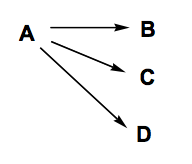Todd:Chem3x11 ToddL4: Difference between revisions
Matthew Todd (talk | contribs) (sn2 section) |
Matthew Todd (talk | contribs) (sn2 inversion) |
||
| Line 53: | Line 53: | ||
[[Image:SN2 Energy Diagram.png|thumb|center|400px| '''Scheme 8:''' Energy Profile for the SN2 Reaction for both the Actual Reaction and an Alternative]] | [[Image:SN2 Energy Diagram.png|thumb|center|400px| '''Scheme 8:''' Energy Profile for the SN2 Reaction for both the Actual Reaction and an Alternative]] | ||
And we can prove all this (backside attack and no intermediates) by using an enantiopure substrate - an SN2 reaction gives an enantiopure inverted product in the following sequence. | |||
[[Image:SN2 Stereochemistry.png|thumb|center|400px| '''Scheme 9:''' Inversion of Configuration Observed in a Real S<sub>N</sub>2 Reaction]] | |||
==Mechanism of the S<sub>N</sub>1 Reaction Revisited== | |||
Revision as of 22:32, 27 April 2012
Chem3x11 Lecture 4
Under construction Sat Apr 28.
(Back to the main teaching page)
Key concepts
- 1
- 2
- 3
Why do we Study Reaction Mechanisms?
A reaction mechanism is the detail of how/why one molecule becomes another. Why do we care? Three reasons:
1) Truth - even if a reaction is well-behaved, we're human being and like to understand the universe.

2) Complexity - in many cases reactions do unexpected things. Reactions never "don't work" - they either give back unreacted starting material, give the expected product, give something else, or give mixtures of things. Frequently we want to understand reaction mechanisms so we can understand complex reaction outcomes - the "Why did that happen?" question.

3) Prediction - if we understand reaction mechanisms we can start to make intelligent predictions about how to make new reactions work.

Stereochemistry is useful in the study of reaction mechanisms. If we compare the stereochemistry of starting materials with the stereochemistry in the products, we can deduce things that must have happened in a reaction mechanism even if we can't see those things directly. This forms one very useful part of the study of mechanisms (when coupled with things like spectroscopy and kinetics).
In this lecture we'll talk about the standard polar organic reactions that you've seen already.

The first thing to say, by way of introduction, is that we need to remember that reactions don't just happen as if by magic between the two ions. The nucleophile and electrophile have molecular orbitals on them that need to align for a reaction to occur. In the case of polar reactions an electron pair in a filled molecular orbital on the nucleophile needs to overlap with an empty molecular orbital on the electrophile. Good overlap (giving a strong bond) requires these orbitals be close in energy.

A good nucleophile tends to have a high energy Highest Occupied Molecular Orbital (HOMO) while a good electrophile tends to have a low energy Lowest Unoccupied Molecular Orbital (LUMO).
Mechanism of the SN2 Reaction Revisited
We all remember the SN2 reaction, where bond formation and breaking occurs in a single rate-limiting step. The HOMO in the examples below is the lone pair in an sp orbital on the hydroxide O, while the LUMO is the σ* orbital of the C-I bond.

Focussing on the frontier orbitals (the HOMOs and LUMOs) gives a reason for the inversion of stereochemistry that is observed when this reaction takes place.

Note that just based on the frontier orbitals, the nucleophile could in theory attack the iodine end of the molecule here, but the whole process is higher in energy.

And we can prove all this (backside attack and no intermediates) by using an enantiopure substrate - an SN2 reaction gives an enantiopure inverted product in the following sequence.

Mechanism of the SN1 Reaction Revisited
The Licence for This Page
Is CC-BY-3.0 meaning you can use whatever you want, provided you cite me.
